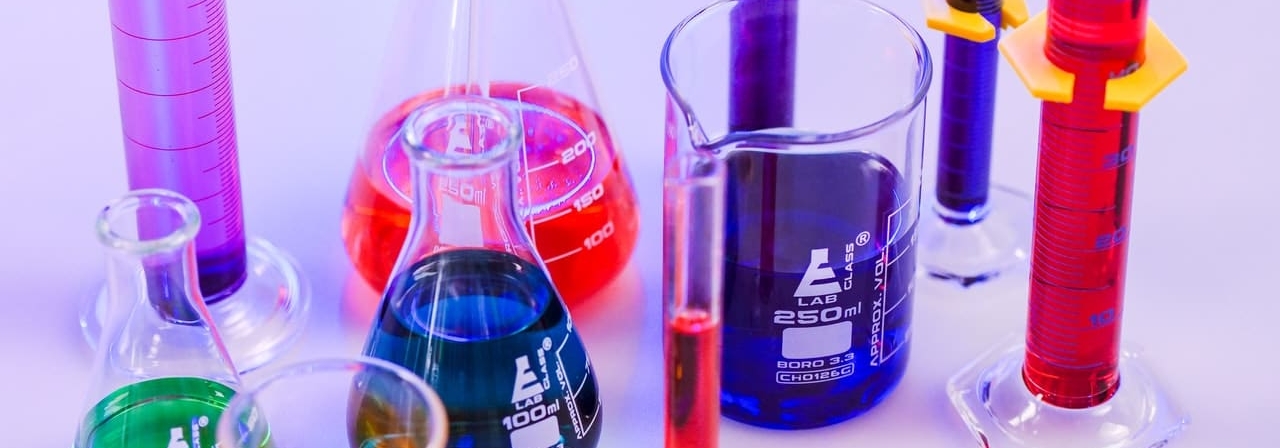In this English vocabulary worksheet we will be giving out the most common & important words regarding Chemistry,and more precisely:
- A comprehensive definition of chemistry;
- A complete Chemistry vocabulary list (elements, chemical reactions, equipment, units of measurement).
It’s a lot of work, but we’ve made it easy for you to find your way around.
Whether you wish to take the IELTS, TOEIC, TOEFL, CAE, FCE, BRIDGE, BULATS (Linguaskill) or even the BRIGHT ENGLISH, you need to enhance your English vocabulary in order to prepare for your test. Vocabulary is also essential if you wish to learn English to perfection! We have have made a long list of vocabulary worksheets:
- Anthropology Vocabulary
- Stock Market Vocabulary
- Real Estate Vocabulary
- Purchase Vocabulary
- Product Vocabulary
- Research Vocabulary
- Phone Vocabulary
- Payment Vocabulary
- Office Supplies Vocabulary
- Management Vocabulary
- Law Vocabulary
- Human Resources Vocabulary
- The Factory Vocabulary
- Vocabulary List: Bank and Finance
- Computer Vocabulary
- Marketing Vocabulary
- Social Media Vocabulary
- Meteorology Vocabulary
- Culture Vocabulary List
- Architecture Vocabulary
- Sociology Vocabulary
What Exactly Is Chemistry? Definition and Explanation
It is a science which studies the various compounds of matter, it analyses their principles, investigates their combinations and inspects the generated effects.

Chemistry Vocabulary: List of Basic Terms and Words
| Word | Definition |
|---|---|
| Atom | A fragment of a chemical component constituting the tiniest quantity able to be associated with another element |
| Electron | A negatively charged particle that comprises the external part of the atom |
| Ion | An ion is an atom or molecule that has gained or lost one or more electrons. |
| Molecule | A set of at least two atoms, identical or not, chemically attached to each other |
| Neutron | An elementary particle, constitutive of the atomic nucleus. One exception is the normal hydrogen nucleus. It is electrically neutral |
| Nucleus | The internal part of an atom. It is composed of neutrons and protons |
| Proton | A particle that makes up the nucleus of an atom and has a positive charge identical to that of the electron |
Chemistry Vocabulary: List of Words by Family of Elements
| Word | Definition |
|---|---|
| The Alkali metal family | |
| Cesium | A chemical element with atomic number 55, symbol Cs, the most alkaline of the alkali metals |
| Lithium | A chemical element with atomic number 3, symbol Li. It is an alkali metal |
| Potassium | An altomic element with atomic number 19, symbol K, alkali metal found in potash |
| The Alkaline earth metals family | |
| Barium | A chemical element with atomic number 56, symbol Ba. Properties similar to those of lime |
| Beryllium | A chemical element with the symbol Be and atomic number 4. The best known gemstones from it are the emerald and the aquamarine |
| Calcium | A chemical element with atomic number 20, symbol Ca. It is the fifth most profuse element in the earth’s crust |
| Magnesium | It is the ninth most abundant element in the universe. As a result from the successive sum of three helium nuclei to one carbon nucleus |
| The Lanthanides family | |
| Cerium | A chemical element with atomic number 58 and symbol Ce. It is part of the lanthanide and rare earth series |
| Europium | A chemical element, symbol Eu and atomic number 63. Europium is the most reactive of the rare earth elements |
| Lanthanum | A chemical element, with symbol La and atomic number 57. Lanthanum remained concealed in cerium oxide for a very long time |
| The Actinides family | |
| Plutonium | A chemical element with the symbol Pu and atomic number 94. It is a transuranic radioactive metal of the actinide group |
| Uranium | A chemical element with atomic number 92, symbol U. It is of the actinide family. It is a very long-life radioactive heavy metal |
| The Transition metals family | |
| Chromium | A chemical element with atomic number 24, symbol Cr. Its single element is a transition metal |
| Cobalt | A chemical element with atomic number 27, symbol Co. It has similar physical properties to iron and nickel. Natural cobalt minerals can be used in the form of paints, enamels or varnish |
| Copper | A chemical element with atomic number 29, symbol Cu. The simple body copper is a metal |
| Gold | A chemical element with the atomic number 79, symbol Au. The simple body gold is a noble, precious metal whose colour is golden yellow |
| Iron | A chemical element with atomic number 26, symbol Fe. The simple body is the most common ferromagnetic metal and material in everyday life, most frequently made of various alloys |
| Nickel | A chemical element with atomic number 28, symbol Ni. The simple body nickel is a metal |
| Platinum | A chemical element with atomic number 78, symbol Pt. Platinum is a corrosion-proof noble metal It is one of the eight strategic raw classified as essential in wartime |
| Silver | Silver is the chemical element with atomic number 47, symbol Ag. Between copper and gold. Hardly or not oxidisable in air, all three are used to mint coins |
| Titanium | Titanium is the chemical element with atomic number 22, symbol Ti. It is used in light and strong alloys and its main sources are rutile and anatase |
| Tungsten | A chemical element with atomic Number 74, symbol W It is used in its pure form in electrical applications but in the shape of alloys, it is suitable for the production of tools requiring great hardness such as drills, abrasive powders etc. |
| Zirconium | Zirconium is the chemical element with atomic number 40, symbol Zr. It is a transition metal and the most aged of all elements on earth |
| The Poor metal family | |
| Aluminium | A chemical element with atomic number 13, symbol Al. The simple body aluminium is a malleable, silvery metal that is hardly altered by air and is of low density |
| Lead | A chemical element with atomic number 82, symbol Pb. Usually, the simple body lead is a malleable, bluish-grey metal, which gradually bleaches on oxidation. It is poisonous, mutagenic and dangerous for reproduction |
| Mercury | Mercury is the chemical element with atomic number 80, symbol Hg. The simple body mercury is a metal, liquid and slightly viscous. It was once used for thermometers and batteries |
| Tin | Tin is the chemical element with atomic number 50, symbol Sn. It has been used since ancient times to protect tableware from oxidation and to prepare bronze |
| Zinc | A chemical element with atomic number 30 and symbol Zn. It has five stable natural isotopesA chemical element with atomic number 30 and symbol Zn. It has five stable natural isotopes |
| The Metalloids family | |
| Arsenic | The chemical element with atomic number 33, whose symbol is As. The corresponding simple body is a silvery crystalline solid |
| Silicon | Silicon is the chemical element with atomic number 14, symbol Si. It is a tetravalent metalloid and is the most abundant element in the earth's crust after oxygen |
| The Non-metal family | |
| Carbon | A chemical element with atomic number 6 and symbol C. It possesses three natural isotopes. Two are stable and a third is radioactive with a half-life |
| Hydrogen | Hydrogen is the chemical element with atomic number 1, symbol H. It is formed of three isotopes: Protium, Deuterium and Tritium,.The latest is radioactive |
| Nitrogen | Nitrogen is the chemical element with atomic number 7, symbol N. The minerals containing nitrogen are predominantly nitrates. It is mainly used for industrial purposes |
| Oxygen | Oxygen is the chemical element with atomic number 8, symbol O. It is the third most abundant element in the universe and constitutes 62.5% of the mass of the human body |
| Phosphorus | Phosphorus is the chemical element with atomic number 15, symbol P. White phosphorus emits, by chemiluminescence, visible light in the dark when exposed to air. Due to a rapid decrease in resources, it is classified as a critical mineral raw material |
| Sulfur | It is the chemical element with atomic number 16, symbol S. It is an essential element for all living beings. It is used mainly to prepare sulphuric acid which is the basic product of the chemical industry |
| Noble Gases | |
| Helium | Helium is the chemical element with atomic number 2, symbol He. Helium has two stable isotopes: helium 4, and less abundant helium 3. The various uses of Hélium is growing rapidly |
| Neon | Neon is the chemical element with atomic number 10, symbol Ne. It is one of the most abundant elements in the universe, but it is rare on earth, it is present mainly in the earth’s atmosphere and in some minor quantities in rocks |
| Radon | Radon is the chemical element with atomic number 86, symbol Rn. All the known isotopes of this gas are radioactive |
Vocabulary List on the Basic Chemical Reactions
| Word | Definition |
|---|---|
| Combustion | Combustion is a chemical reaction producing a transfer of electrons by thermal action |
| Corrosion | Corrosion is the chemical reaction damaging a material in contact with an oxidising agent |
Chemistry Vocabulary: Basic Equipments and Tools
| Word | Definition |
|---|---|
| Flask | A glass container used to prepare solutions. |
| Beaker | A glass container (generally in a cylindrical shape) with a flat bottom |
| Centrifuge | A centrifuge is a device that induces acceleration by rapid rotation. It is used to accelerate the decantation of separate products of different density |
| Gas-liquid contactor | A gas-liquid contactor is used for mass and heat transfer between a gas phase and a liquid phase |
| Pipette | A pipette is a tool used to sample a solution |
| Refractometer | It measures the limiting angle of refraction of a material |
Chemistry Vocabulary: List of Units of Measurement
| Word | Definition |
|---|---|
| Einstein | A unit of measurement of the light energy absorbed by one mole of reagent |
| Electronvolt | An Electronvolt is a unit of measurement of energy |
Improve Your Vocabulary Lexic With GlobalExam
GlobalExam is an up-to-date online platform that helps you structure your English learning. Thanks to our advanced methods, your success is guaranteed.
Just go through our various resources and pick the package that’s right for you. With operators in almost every part of the world, you’ll never be lost. Yes, your satisfaction is our priority !



